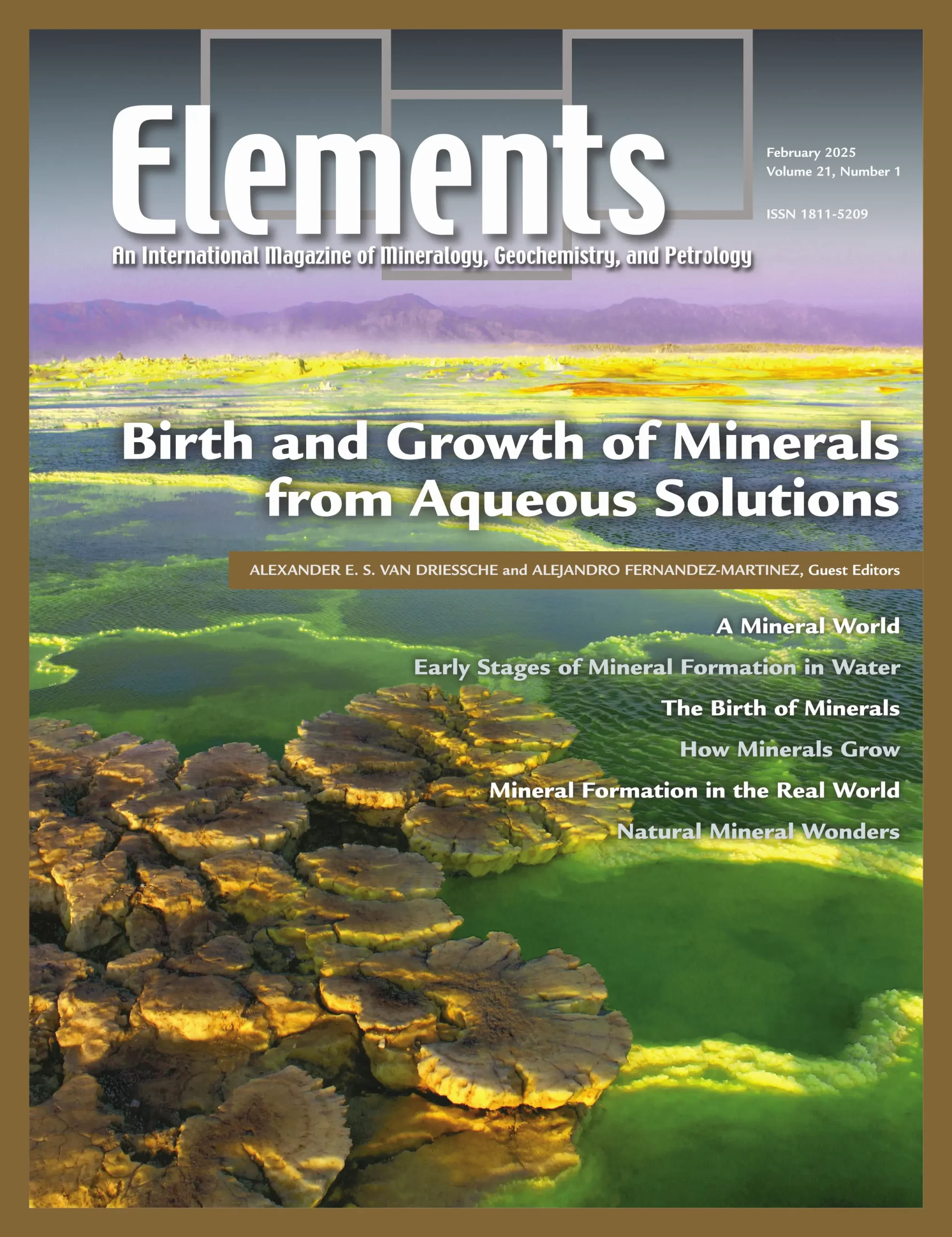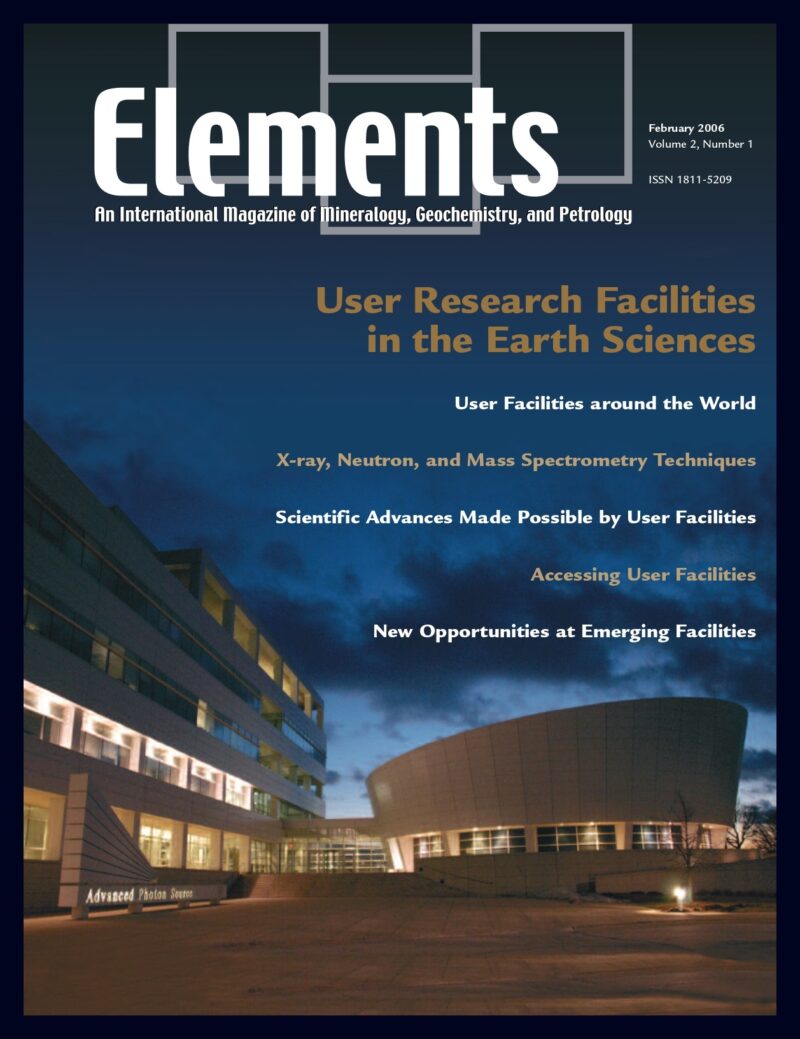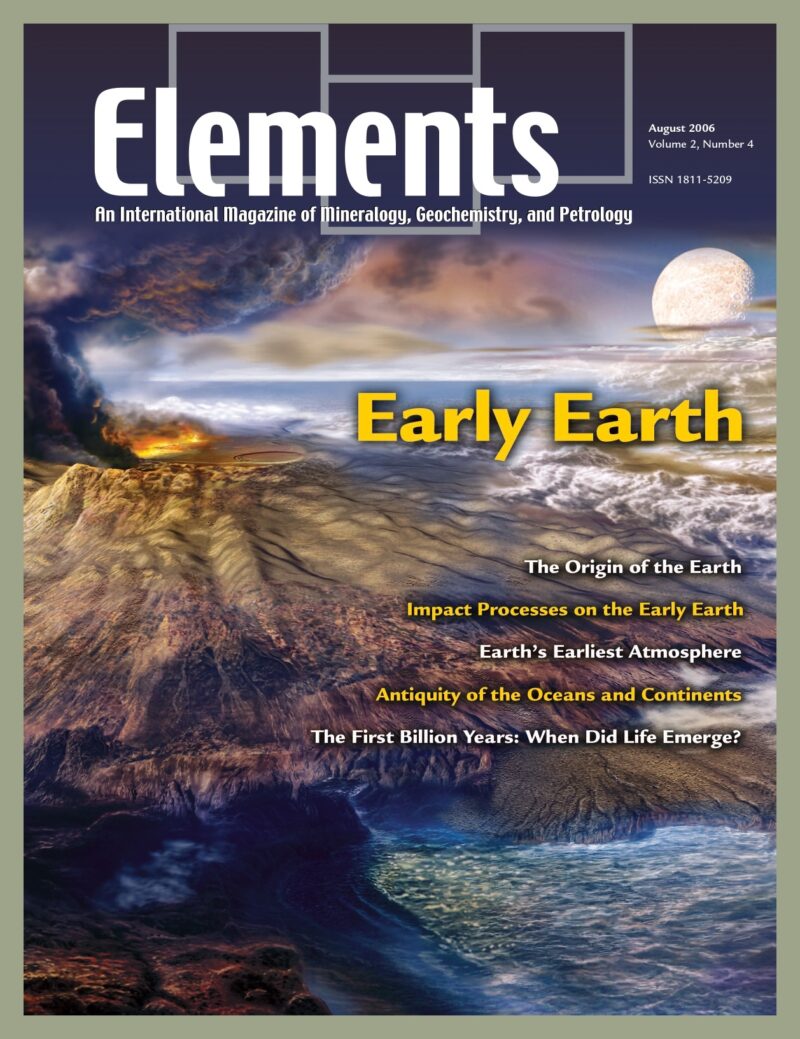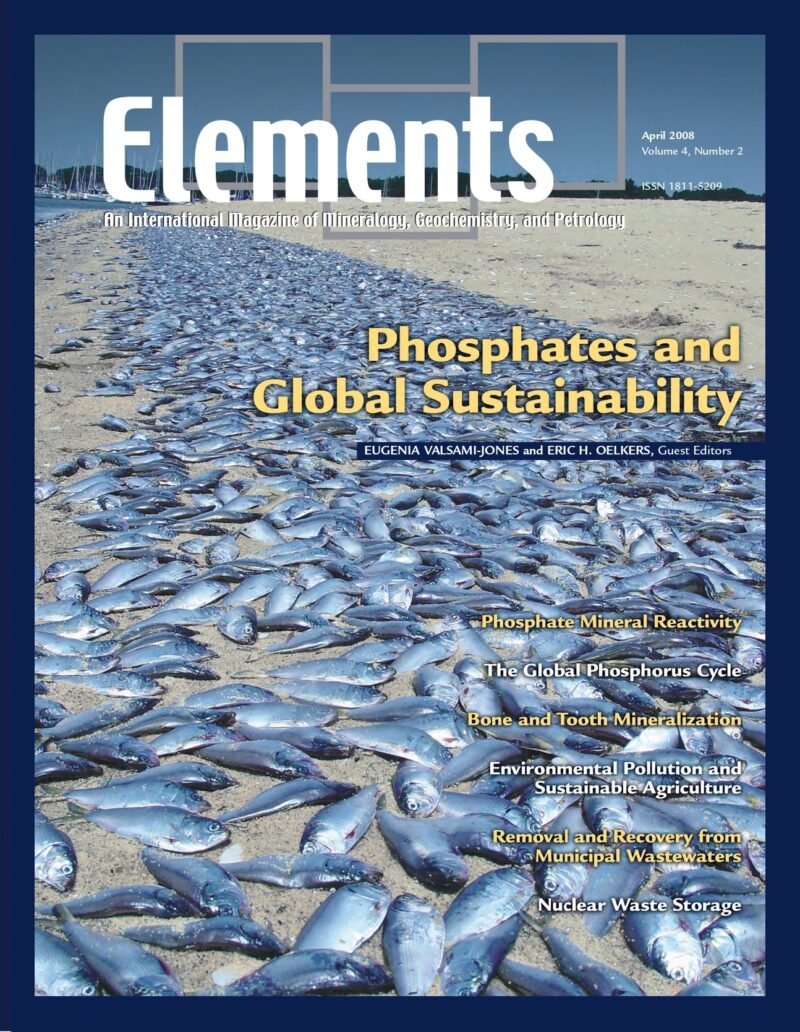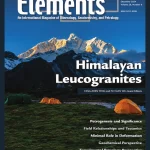
Himalayan Leucogranites, December 2024, Vol. 20, No. 6
December 14, 2024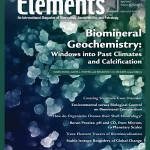
Biomineral Geochemistry: Windows into Past Climates and Calcification, April 2025, Vol. 21, No. 2
April 17, 2025Birth and Growth of Minerals from Aqueous Solutions, February 2025, Vol. 21, No. 1
$20.00
The birth and growth of minerals from aqueous solutions is a ubiquitous process in both natural and engineered environments. This research field has recently experienced a paradigm shift due to the discovery of non-classical nucleation and growth processes.
Birth and Growth of Minerals from Aqueous Solutions
February 2025, Vol. 21, No. 1
The birth and growth of minerals from aqueous solutions is a ubiquitous process in both natural and engineered environments. This research field has recently experienced a paradigm shift due to the discovery of non-classical nucleation and growth processes. These insights have helped us to understand better the natural world and significantly impact various industrial and environmental applications, such as the development of more sustainable building materials, mineral processing, CO₂ storage, and water treatment. Consequently, detailed knowledge of the mechanisms and kinetics underlying mineral nucleation and growth is vital in these areas.
Why You’ll Love Elements Magazine:
- Expert Contributors: Articles written by renowned researchers in the field of geoscience.
- Engaging Content: Join a community of readers who are passionate about Elements.
- Exceptional Quality: Each issue is printed on high-quality paper with stunning visuals and detailed illustrations that bring complex scientific concepts to life.
Order your copy of the February 2025 issue of Elements magazine today and explore Birth and Growth of Minerals from Aqueous Solutions.
Related products
-
User Research Facilities In The Earth Sciences, February 2006, Vol. 2, No. 1
$20.00Earth scientists rely on effective access to user research facilities that provide state-of-the-art analytical instrumentation. This thematic issue focuses on some of these facilities and how to use them.
-
Early Earth, August 2006, Vol. 2, No. 4
$20.00The earliest Earth was a strange inhospitable world, yet transitions occurred culminating in the evolution of life within the first billion years. The preservation of a sparse and ambiguous rock record has encouraged debate.
-
Phosphates And Global Sustainability, April 2008, Vol. 4, No. 2
$20.00Phosphorus is a unique element: it is essential to the existence of all living forms, and as such controls biological productivity in many terrestrial and marine environments; but when in excess, it leads to uncontrollable biological growth and water-quality problems. This has become a common environmental issue, resulting from our careless use of phosphorus in agriculture, yet phosphate ore deposits, from which fertilizers are produced, are a finite natural resource.

